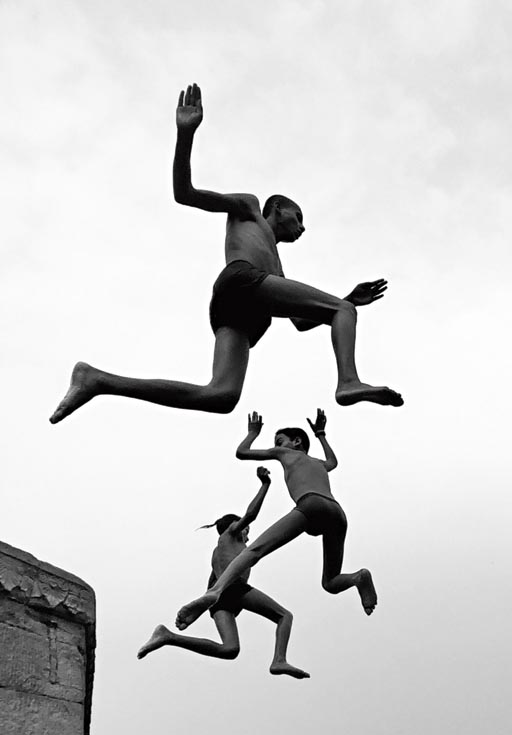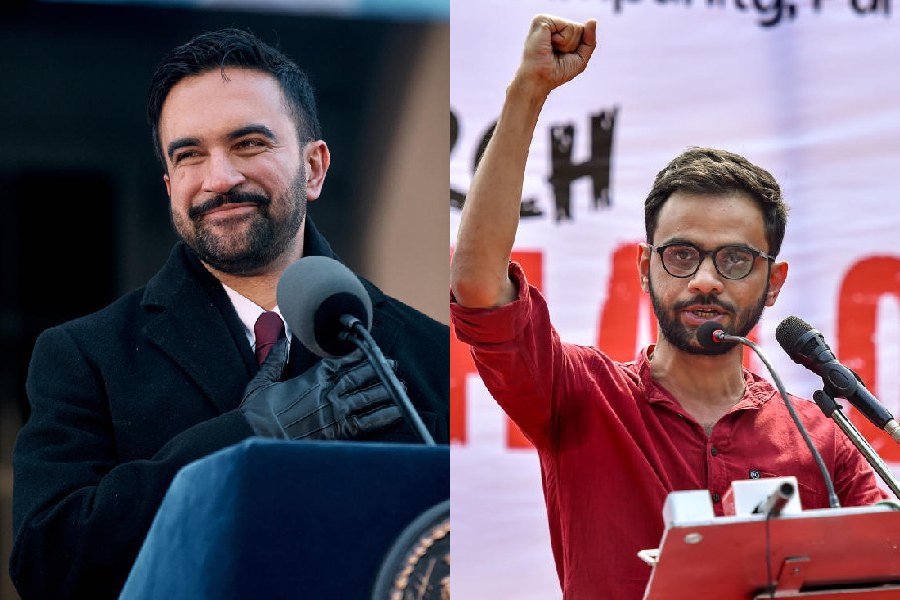With a raft of innovations, the iPhone has not just revolutionised the smartphone industry, it has democratised photography. It has given the likes of London-based photographer Dimpy Bhalotia a reason to mould her craft differently. Always armed with an iPhone, Bhalotia is always seeking ways to take photography to a new high. She has been bestowed the title of Photographer of the Year at the 2020 iPhone Photography Awards, the first and the longest running iPhone photography competition since 2007. Her winning shot — ‘Flying Boys’ has been selected from thousands of images submitted by iPhone photographers from 140-plus countries.
Soon after the winners were announced, we emailed her a few questions and here’s what she wrote back.
Congratulations on the win. Your winning shot was taken in Varanasi. If you can share a bit about the moment that you have captured and what took you to Varanasi?
Thank you so much. Winning this award is a huge accolade for my craft and a tremendous encouragement to me.
‘Flying Boys’ characterises the day-to-day activities of the young boys living in Varanasi in India. These young boys were jumping off a man-made cliff into the Ganges river to beat the heat during the Indian summers. They are the symbol of fearlessness and freedom. Given how these street scenes are disappearing under encroaching modernisation and climate change, it seems like these moments will cease to exist. I wish to cast my photographs into life-size sculptures, specifically ‘Flying Boys’. I want to cast these moments to encourage people to step back from technology to appreciate their lived experience and spread the message of hope, love, energy and freedom.
The iPhone X was used to click the winning shot. What makes the iPhone X special to you and how is it different from, say, the iPhone 11 Pro?
I have been shooting with iPhone for over nine years now and I have shot with almost all the generations. It’s a lightweight butter slice always in my hand, which has the entire world in it. It feels like I’m shooting with my palm. And me being a heliophile street photographer — a passionate lover of the sun — what more beauty one can seek without having to produce scenes and light? This craft is a manifestation of one soul full of freedom to explore. Understanding the true semiotics of street photography with iPhone at my convenience is a euphoria.

Dimpy Bhalotia has been bestowed the title of Photographer of the Year at the prestigious 2020 iPhone Photography Awards for her snap ‘Flying Boys Dimpy Bhalotia
The intentionality of being present in the moment is a core component of street photography that resonates strongly for me. Metaphysically, nothing is compared to the human eye, but street photography makes me feel closest to the semiotics of life. The power of capturing inevitable existential moments attracted me to it like a magnet. The way the street scenes are disappearing under encroaching modernisation, I realised this is something I want to capture. To me, street photography is privileged photography as I can engage in it as a daily craft. And having iPhone with me at my leisure has made it all the more convenient for me. Freedom of capturing transitory moments of the present era. Freedom of expressing the realism of what I see and experience in visual form. Freedom of what, when, and where I prefer to make my frames from. iPhone grants me all that privilege to manoeuvre my craft as I like.
From your Instagram feed, it seems you are interested in black-and-white shots.
Black and white is the most decluttered form of my world. It’s how I see. My mind renders in monochrome. I prefer less clutter and no extraneous distraction in my photographs. And I am immensely drawn to shapes and forms, light and shadows. I find black and white are colours of boldness with shyness, and agile with a calmness which I believe is my personality. It resonates with me. Also, I feel there is further realism in black and white as visually we don’t get diverted by colours. A photo in black and white powers that shapes, forms and moments are defined more boldly and there is the potential to capture the movement in its truest form. Colour is attractive too and I do shoot in colour for assignments, but then it gets hard for the viewer to identify if they like the photo because of the colour in it, or because of what has been captured in it. In black and white, there is no question of colour to distract the viewer. It’s all about the moment that has been captured. And that is highly important to me. Moments and movements are what I believe in firmly. Black and white eliminates the question of the who’s and the where’s and the what’s and the when’s. And that’s the beauty of it. And I find it exceedingly powerful.
Tell us a bit about yourself and what took you to the UK and how you became interested in photography?
I am a full-time hodophile fine art street photographer based out of London. After completing my schooling from Bombay, I moved to London to pursue a bachelor’s degree in fashion. Having worked in the fashion and interior’s industry for many years with renowned designers in London, I found my love in street photography, and I believe the black-and-white medium found its love in me.
I see the world in monochrome and I find art in the extraordinary details of the seemingly ordinary life on streets. I believe the universe is a piece of art and so is every soul and street. It is this inspiration that makes photography my fitoor (passionate obsession). I travel the globe cutting across hills, deserts and seas, shooting to capture natural predilection for unpredictable, larger-than-life movements lending visual and emotional excitement in my photographs.
To me, street photography is my visual lexicon which has no smokescreen. It’s the utmost truth of what is happening around us that I love capturing with staggering intellect in black and white, which is the most decluttered version of my world. Understanding the law and theory of light, moment and movements are what made me more curious to explore the streets. The artist soul burning in me couldn’t resist and I started shooting.
I enjoy seizing a moment, which gives my viewer a complete answer. And what I mean by that is capturing that one frame which characterises the whole moment of that scene. I have no preconceived vision in my head when I hit the streets. Having spent years honing my perspective and my muscle memory, I have come to a point where I don’t stop and think to compose a frame. Shooting with iPhone has become my second nature now. I realise once you develop your eye, provided any situation, you know how to react in a split of a second. I know now what to see and what to unsee instantly. And iPhone has given me that convenience to quickly pull my phone out and capture moments. I just follow the light, and that’s how I discover streets. Light is my guide.
What is the most important thing to keep in mind while taking photographs?
Composition and understanding light. Everyone is so blinded of shooting what’s in a trend that they have overlooked the true semiotics of photography. In 1435, Alberti, in his book on paintings, outlined a method for drawing a complex object using a net, a grid of threads, held in front of the subjects. And now we use that same grid in our cameras to capture frames. Isn’t that cool? Now how many of us knew about this? Everyone is just producing photographs without fathoming it. I call them lazy photographers doing lazy photography. I believe if one really understands how light works then one can truly enjoy shooting.
Besides the iPhone, do you use traditional cameras?
No, I don’t own any other camera. I am a pure iPhone photographer. It’s like a nice slice of butter, with an excellent camera in it. It’s a magnificent invention. I was drawn to it.
Finally, your favourite photo editing apps.
I shoot only with the native iPhone camera app. No third party. And when it comes to editing, I rarely devote any time to editing. Maybe a few photos but also then just a minute number of plus or minus of highlight within iPhone photo gallery (inbulit). Most of my photos are raw, straight out of my iPhone.











